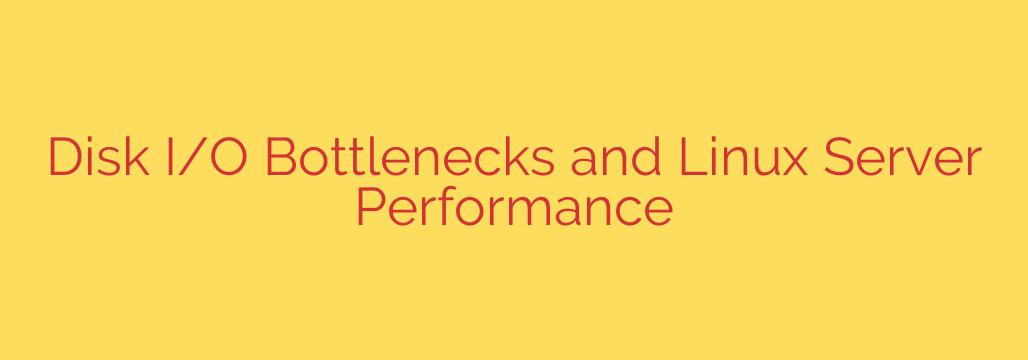
Understanding and resolving disk I/O bottlenecks is absolutely crucial for maximizing Linux server performance. When a server’s disk subsystem struggles to keep up with the demand for reading and writing data, it creates a bottleneck that slows down the entire system, regardless of how powerful the CPU or how much RAM it has. This often manifests as high latency, where applications and users experience significant delays waiting for data, and low throughput, meaning the server can’t process as much data per second as it should.
Identifying these bottlenecks is the first step. Common signs include high load averages that don’t correlate with CPU usage, slow application response times, and excessive wait times reported by monitoring tools. Tools like iostat, vmstat, and iotop are indispensable for diagnosing the problem. They provide insights into metrics like disk utilization, I/O wait time (percentage of time the CPU is idle while waiting for disk I/O), and queue lengths (how many I/O requests are pending). A high percentage of I/O wait time is a strong indicator of a disk bottleneck.
Once identified, several strategies can be employed to mitigate or resolve these issues. One of the most impactful solutions is upgrading the storage hardware. Solid State Drives (SSDs) offer significantly faster read and write speeds and lower latency compared to traditional Hard Disk Drives (HDDs), providing a substantial boost to I/O performance. Optimizing applications to reduce unnecessary disk writes and reads can also help. Implementing effective caching strategies, both at the application level and the operating system level, reduces the need to access the disk frequently by keeping hot data in faster memory. Furthermore, ensuring the filesystem is correctly configured and tuned, and using appropriate RAID levels for redundancy and performance can make a difference. Monitoring performance over time allows administrators to proactively identify potential issues before they severely impact server operations and user experience. Focusing on optimizing the disk I/O subsystem is often the key to unlocking true server speed and responsiveness.
Source: https://linuxblog.io/linux-server-performance-disk-io-slowing-application/








